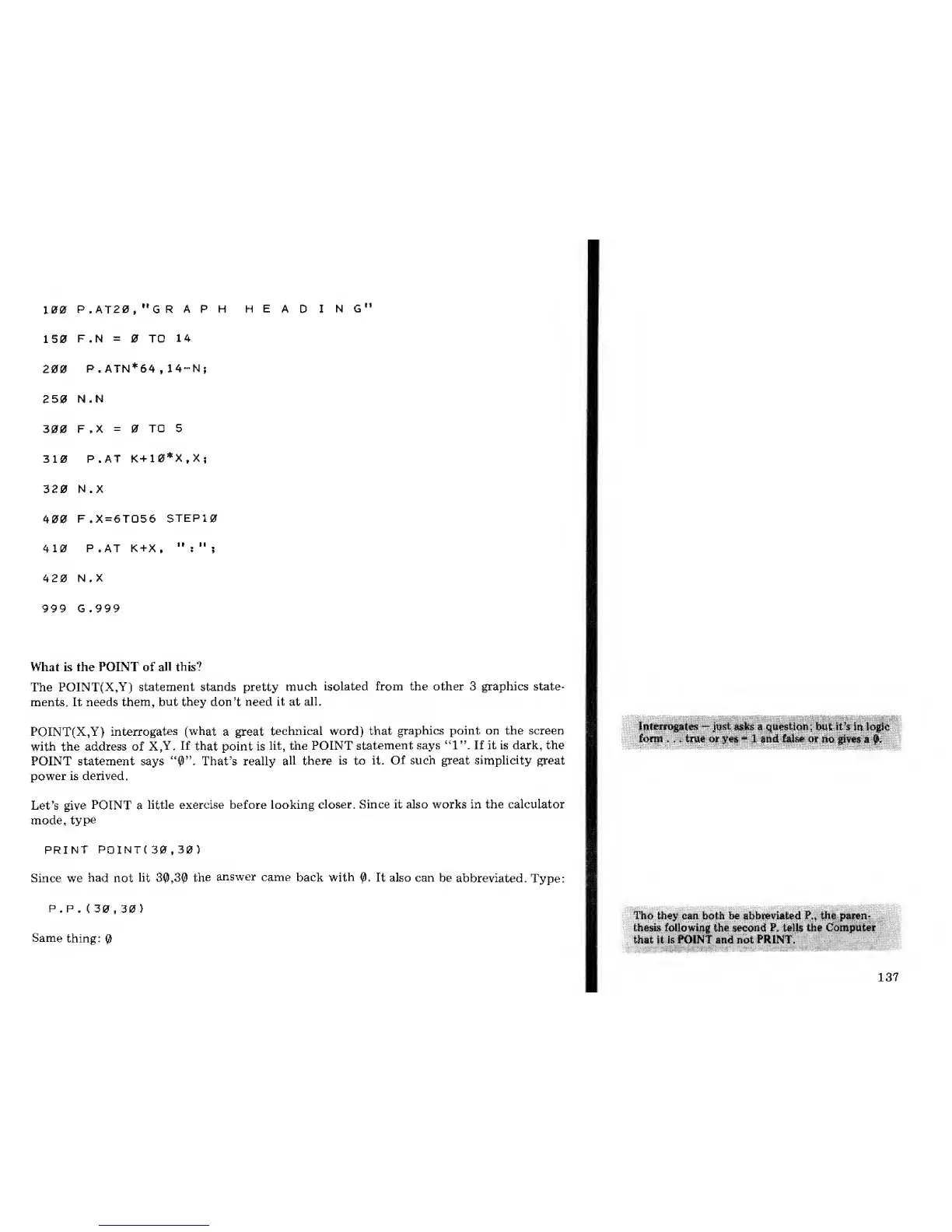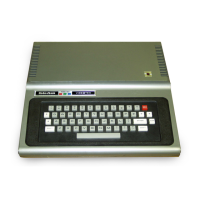100
P.AT20,"GR
APH
HEADING"
150
F.N
=
TO
14
200
P. ATN*64 , 14-N
J
250
N.N
300
F ,X
=
TO
5
310 P. AT
K+10*X,X;
320 N.X
400
F.X=6T056
STEP10
410
P .AT K
+
X
,
"
s
"
;
420
N.X
999 G.999
What is the POINT of
all
this?
The
POINT(X,Y)
statement stands pretty
much
isolated from the other 3 graphics state-
ments. It needs them,
but
they
don't
need
it at all.
POINT(X,Y)
interrogates (what
a great
technical word) that
graphics point on the screen
with
the address of
X,Y.
If
that point is
lit, the POINT
statement says
"1".
If it is dark, the
POINT statement says
"0".
That's really
all
there
is
to
it.
Of
such great
simplicity
great
power is derived.
Let's give
POINT
a
little exercise before looking
closer. Since it also works in the calculator
mode,
type
PRINT
POINTt
30
,30)
Since we
had
not
lit
30,30
the
answer
came
back
with
0.
It also can
be
abbreviated.
Type:
P.P.
( 30,30)
Same
thing:
Interrogates
—
just
asks a
question;
but it's
in
logic
form . . ..
true
or
yes.™
1
and
Mm
or
rtogivesa
fy
Tho they can both be abbreviated
P.,
the paren-
thesis
following the second
P. tells the Computer
that it is POINT and not PRINT.
"."
-
;/; '.".Ji--|^"'-----:.
:%
?°V-
'
-i
.'
:.1.V-'
-1'
137

